An average human being’s body needs about 50 to 60 grams of proteins to function in a proper manner. People who have high levels of physical activity, bodybuilders, people in physically demanding jobs and sports like weight lifting require additional protein intake. Although most of us get adequate amounts of protein in our everyday diet, the RDA (reference daily intake) recommends, 44 grams for an average woman and for an average male the intake should be 56 grams.
A single hamburger has approximately 23 grams of protein but along with a lot of fat. The trick is to consume food in such a manner so that you get protein sans the fat. There are a number of high–protein and low–fat foods.
This is an important component in the milk of the cow which is taken out in the same way as cheese is taken out from milk. It can also be known as the byproduct of the production of cheese. Whey has two types of protein components, the first is protein itself and the other is peptide, that is, protein segment. It is natural and best quality protein and contains all kinds of essential and non-essential amino acids. Each scoop of whey contains about 20 to 25 grams of protein. The best protein supplement is whey.
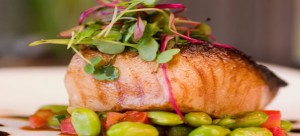
Fish is not only an excellent source of protein but also a rich source of fatty acid which is not easily obtained from many food products. Yellow fin tuna is the richest source of protein providing 30 grams of protein per 100 grams serving. 100 grams serving of Salmon and Halibut provides 27 grams of protein and the same amount of Snapper and Tilapia provides 26 grams of protein. Also a can of tuna, canned in spring water or brine provides 40 grams of protein. Mackerel provides about 23 grams of protein per 100 grams serving and also tastes much better then tuna.
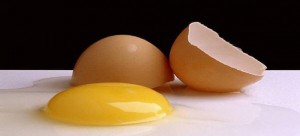
Eggs are a complete source of protein. 12 grams of protein is gained if you start your day with a 2 egg omelet. A whole egg contains about 6–7 grams of protein. A large egg is not only a great source of protein but also contains essential amino acids that are required in a healthy diet. Fortified eggs are a recent development in the areas of functional foods. Flaxseeds, which are a rich source of omega 3 fatty acids, are added to the diet of the hens and they produce eggs that contain 6 times the omega 3 fatty acids as compared to the normal eggs. Fortified eggs can also be a rich source of vitamin E. Chicken eggs are a weak source of protein providing only 13.6 grams per 100 grams serving.
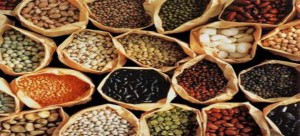
This is the best source of vegetarian protein. Soybeans are extremely rich sources of protein containing 28 grams of protein per cup. Tofu or bean curd is a food made by coagulating soy milk and pressing the curd into blocks. Tofu is rich in protein, providing about 15.78 grams of protein per 100 grams serving. Among the nuts, peanuts are the richest source of protein containing 23.7 grams protein per 100 grams serving. A bean carries more protein when it is mature, larger in size and quite old. Soybeans that are mature and have been roasted have maximum protein providing 39.6 grams per 100 grams serving. Beans and legumes are inexpensive forms of protein.

This is a rich source of obtaining protein for vegetarians. A liter of milk contains 30 grams of protein. Half a cup of cottage cheese contains 14 grams of protein. Parmesan cheese which is low on sodium provides maximum protein among all cheeses, that is, 41.6 grams of protein per 100 grams. Regular parmesan provides 35.8 grams per 100 grams of protein. 100 grams serving of Swiss cheese, Mozzarella and Romano cheese provide protein between 28–30 grams. The softer spreadable cheese provides least protein, that is, in a 100 grams serving it provides only 16 grams of protein
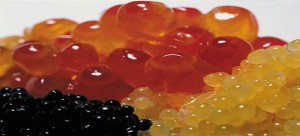
Roe and Caviar, fish eggs, also provide rich protein. When the internal ovaries of a fish fully ripen then they are known as roe. Cooked and seasoned roe is known as caviar. It is the most expensive dish on the menu.100 grams of fish roe provides 28.6 grams of protein while 100 grams serving of caviar provides 24 grams of protein per 100 grams.

The healthiest form of protein is chicken, turkey and other poultry products. They are also considered better than beef because they contain less fat than beef. A single chicken breast would fulfill half of your daily requirement of protein. 3 ounce of chicken breast contains 29 grams of protein while the same amount of turkey contains 13 grams of protein.
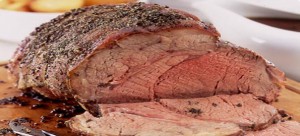
Beef is meat originating from cow and veal is meat from young cattle. It is advisable to choose lean cuts in meat so that you get maximum protein out of it. The top part of beef and veal provides 36 grams per 100 grams serving. Ground beef provides 25 grams of protein per 100 grams serving.
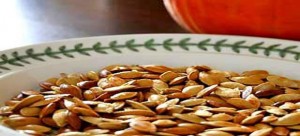
Middle East and East Asia are popular for seeds of watermelon, squash and pumpkin. 33 grams per 100 grams protein is found in seeds of pumpkin and squash. Slightly less, that is, 28 grams per 100 grams serving is found in watermelon seeds. These seeds are not easily available and so you can use the original seeds from the fruit and roast them.
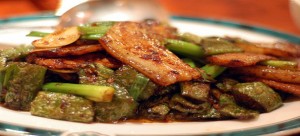
Pork is a similar source of protein to poultry and beef. One should keep in mind to buy lean cuts. 3 ounce of lean cut pork contains 23 grams of protein. One should keep away from bacon as it contains more fat than protein.
These are the various sources of artificial proteins but protein is best if consumed naturally. Artificial proteins like protein powders have certain side effects but no such side effect is experienced if protein is consumed naturally.
A single hamburger has approximately 23 grams of protein but along with a lot of fat. The trick is to consume food in such a manner so that you get protein sans the fat. There are a number of high–protein and low–fat foods.
1. Whey

2. Fish

3. Eggs

4. Nuts, Lentils and Beans

5. Dairy Products

6. Fish eggs

7. Poultry

8. Beef and Lean cut Veal

9. Seeds of Watermelon, Squash and Pumpkin

10. Pork
Pork is a similar source of protein to poultry and beef. One should keep in mind to buy lean cuts. 3 ounce of lean cut pork contains 23 grams of protein. One should keep away from bacon as it contains more fat than protein.
These are the various sources of artificial proteins but protein is best if consumed naturally. Artificial proteins like protein powders have certain side effects but no such side effect is experienced if protein is consumed naturally.


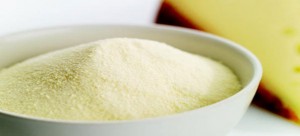
No comments:
Post a Comment